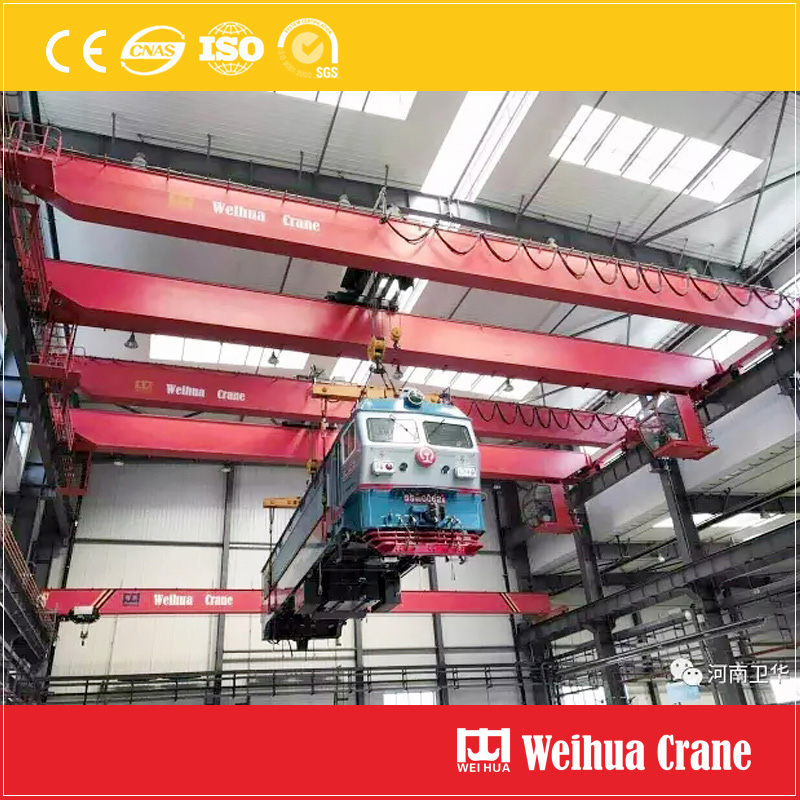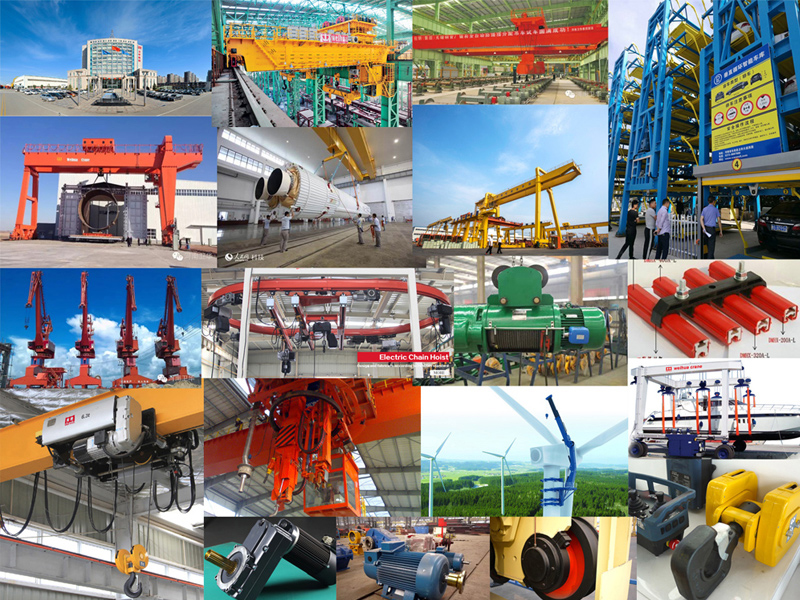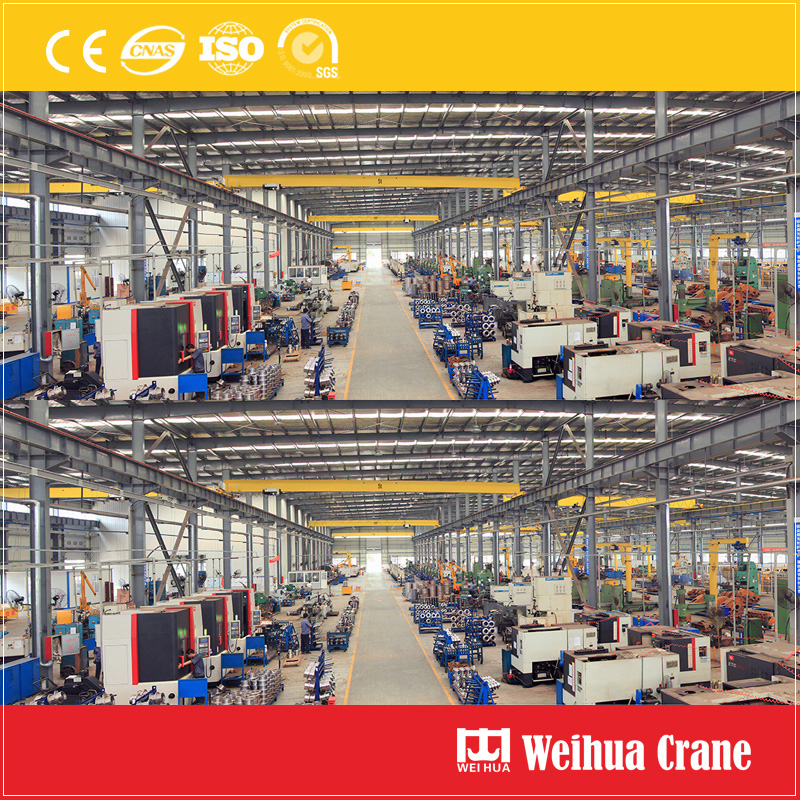Système anti-collision à crochet de grue
2025-08-19
In the dynamic and often congested environments of construction sites, chantiers navals, manufacturing plants, and warehouses, overhead cranes are indispensable workhorses. Cependant, the very nature of their operation – moving heavy loads at height – presents significant risks. One of the most critical hazards is the unintended collision of grue or loads with obstacles, other cranes, or personnel. Crane Hook Anti-Collision Systems are sophisticated technological solutions designed specifically to mitigate these risks, enhancing safety, protecting assets, and improving operational efficiency.
Before delving into the solution, it’s vital to grasp the problem:
- 1. Obstacles: Hooks can collide with structures, équipement, storage racks, murs, or other stationary objects.
- 2. Other Cranes: On sites with multiple cranes operating in the same bay or overlapping work zones, hook collisions are a constant threat, potentially causing catastrophic damage.
- 3. Personnel: While primarily protecting assets, preventing hook collisions also reduces the risk of falling debris or swinging loads injuring workers below.
- 4. Collateral Damage: Even a minor hook impact can damage expensive loads, cause costly structural damage, or lead to production stoppages.

How Anti-Collision Systems Work
Crane hook anti-collision systems function by continuously monitoring the position and movement of the crane hook (and often the entire crane bridge and trolley) relative to predefined hazards or other moving equipment. They typically involve several key components:
-
1. Capteurs & Detection Technology:
- Laser Scanners (LiDAR): Emit laser beams to create precise 2D or 3D maps of the environment, detecting obstacles in the crane’s path. Excellent for defining protected zones.
- Ultrasonic Sensors: Measure distances to nearby objects using sound waves. Robust and relatively inexpensive, suitable for shorter ranges.
- Radar Sensors: Effective in harsh environments (dust, fog, rain) and over longer distances. Can detect metallic objects well.
- RFID Tags & Readers: Used to mark specific hazardous zones or objects. When a crane with a reader approaches a tagged zone, the system triggers warnings or actions.
- Wireless Communication (RF): Essential for systems involving multiple cranes. Cranes constantly transmit their position (bridge, chariot, hook height) to each other and a central controller.
- Camera Systems (Video Analytics): Increasingly used for visual monitoring and AI-powered obstacle detection, providing operators with real-time views.
-
2. Positioning Systems:
- Absolute Encoders: Precisely measure the position of the crane bridge along the runway and the trolley across the bridge.
- Wire Rope Encoders / Laser Distance Sensors: Accurately determine the height of the hook block.
- Inertial Measurement Units (IMUs) / Gyroscopes: Can supplement positioning, especially for hook sway detection.
-
3. Central Control Unit (CCU) / Logic Solver:
- The “brain” of the system. It continuously receives data from all sensors and positioning units.
- Compares the crane’s/hook’s real-time position against predefined safety zones (Par exemple, no-go areas, approach limits to walls, other cranes).
- Calculates relative positions and closing speeds between multiple cranes.
-
4. Operator Interface & Warning/Alarm Systems:
- Visual Warnings: Flashing lights (often color-coded: yellow = warning, red = stop/danger) on the crane cabin, runway, or near hazards.
- Audible Alarms: Distinctive sirens or buzzers increasing in intensity as a hazard approaches.
- In-Cab Displays: Provide operators with real-time graphical representations of the crane’s position, nearby obstacles, other cranes, and safety zones. Show clear warnings and distance readouts.
- Haptic Feedback: Some advanced systems use vibrating controls to alert the operator.
-
5. Intervention Systems (Optional/Automated):
- Speed Reduction: Automatically slows down crane or trolley movement as it approaches a defined hazard zone or another crane.
- Soft Stop: Gently applies brakes to bring the crane to a controlled stop before reaching a collision point.
- Hard Stop (Emergency Stop): Triggers an immediate full stop if an imminent collision is detected. Used as a last resort.
- Movement Inhibition: Prevents the crane from moving into a restricted zone altogether.

Key Benefits of Implementing Anti-Collision Systems
- 1. Sécurité améliorée: Dramatically reduces the risk of collisions, protecting personnel on the ground and preventing accidents caused by falling debris or structural failures. This is the primary driver.
- 2. Asset Protection: Prevents costly damage to the crane itself, the load being lifted, surrounding infrastructure, buildings, and other equipment.
- 3. Temps d'arrêt réduit & Costs: Minimizes expensive repairs, production delays caused by accidents, and potential regulatory fines.
- 4. Increased Operational Efficiency: Allows multiple cranes to operate safely in closer proximity and in overlapping work zones, potentially speeding up complex lifting operations. Reduces operator stress and fatigue.
- 5. Improved Situational Awareness: Provides operators with clear, real-time information about their surroundings, especially in blind spots or complex layouts.
- 6. Conformité: Helps meet stringent occupational health and safety regulations (OSHA, HSE, etc.) and industry best practices regarding crane safety.
- 7. Data Logging: Many systems record operational data and near-miss events, valuable for incident investigation and process improvement.

Considerations for Implementation
- 1. Site Survey & Risk Assessment: Crucial first step to identify specific hazards, define safety zones, and determine system requirements.
- 2. System Selection: Choosing the right technology mix (sensors, positionnement, level of automation) depends on crane type, site layout, number of cranes, environmental conditions, and budget.
- 3. Étalonnage & Commissioning: Precise setup and testing are essential for reliable performance.
- 4. Operator Training: Operators must thoroughly understand the system’s warnings, alarms, limitations, and how it affects crane control (especially if automated interventions are enabled).
- 5. Entretien: Regular inspection, cleaning of sensors, and software updates are necessary to ensure ongoing reliability.



Crane hook anti-collision systems represent a vital technological advancement in industrial safety. By proactively detecting potential collisions and providing operators with clear warnings or even automated interventions, these systems are indispensable tools for preventing accidents, protecting valuable assets, and fostering a safer, more efficient working environment wherever overhead cranes operate. Investing in a robust and well-integrated anti-collision system is not just a compliance measure; it’s a fundamental commitment to operational safety and productivity. As sensor technology and control algorithms continue to evolve, these systems will become even more sophisticated and integral to modern crane operations.








Dernières commentaires